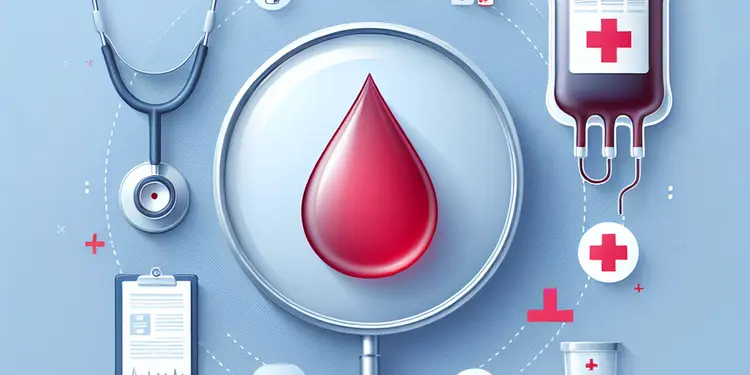
Find Help
More Items From Ergsy search
-

What is a blood transfusion?
Relevance: 100%
-

Blood Product Transfusions
Relevance: 100%
-

Blood Transfusion
Relevance: 97%
-

Are there risks associated with blood transfusions?
Relevance: 95%
-

Is there an age limit for receiving blood transfusions?
Relevance: 92%
-

Is HTLV a risk in blood transfusions?
Relevance: 92%
-

Is Hepatitis B a risk in blood transfusions?
Relevance: 91%
-

Why might someone need a blood transfusion?
Relevance: 89%
-

How long does a blood transfusion take?
Relevance: 88%
-

What diseases can be spread by blood transfusions?
Relevance: 88%
-

What types of blood products can be transfused?
Relevance: 88%
-

How do healthcare providers match blood for transfusions?
Relevance: 87%
-

Is Chagas disease a concern with blood transfusions?
Relevance: 87%
-
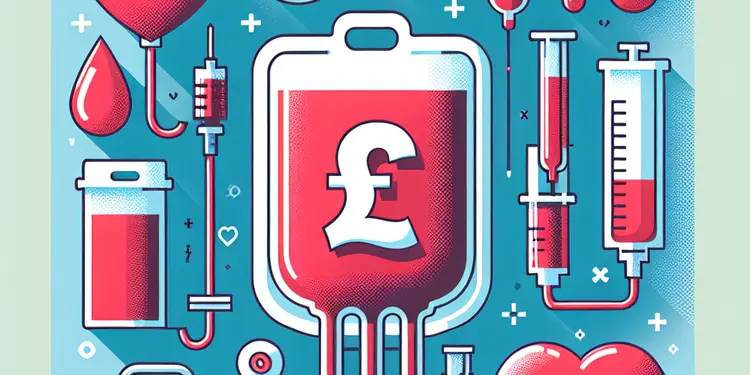
Can HIV be transmitted through blood transfusions?
Relevance: 87%
-
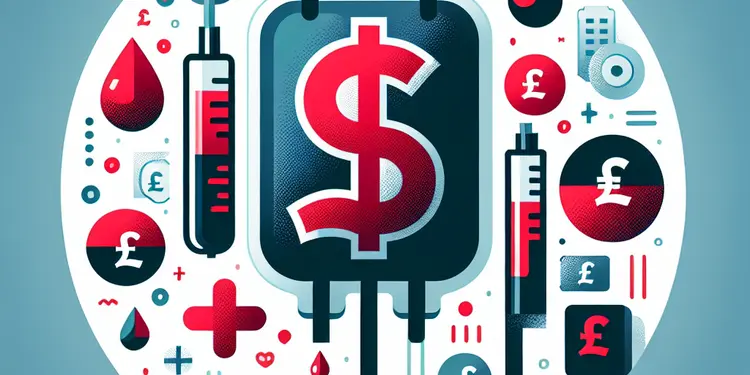
What are some common reasons blood transfusions are needed?
Relevance: 86%
-

Can someone have a reaction to a mismatched blood transfusion?
Relevance: 86%
-

Can syphilis be transmitted via blood transfusion?
Relevance: 86%
-

Is Zika virus screened for in blood transfusions?
Relevance: 85%
-
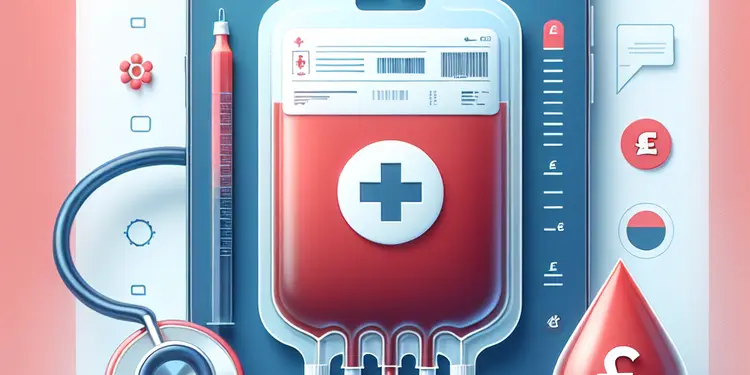
Can bacterial infections be transmitted through blood transfusion?
Relevance: 84%
-

Can people of any blood type receive a transfusion of any blood type?
Relevance: 84%
-
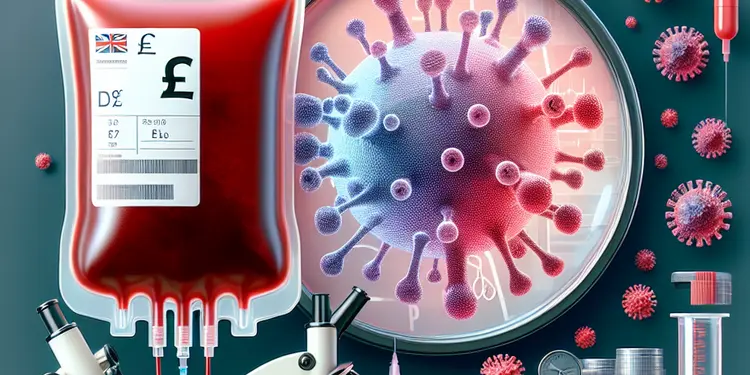
What is the most common disease transmitted by blood transfusion?
Relevance: 84%
-

Are there any parasites that can be transmitted through blood transfusions?
Relevance: 84%
-

Is malaria still a concern for blood transfusion safety?
Relevance: 84%
-

Can COVID-19 be transmitted through blood transfusions?
Relevance: 84%
-
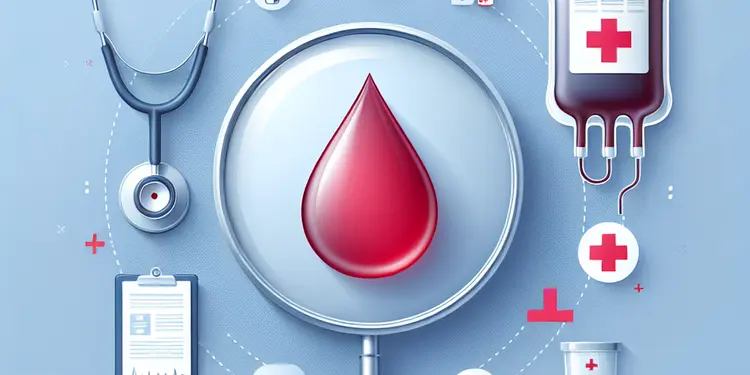
How do doctors determine how much blood is needed for a transfusion?
Relevance: 83%
-
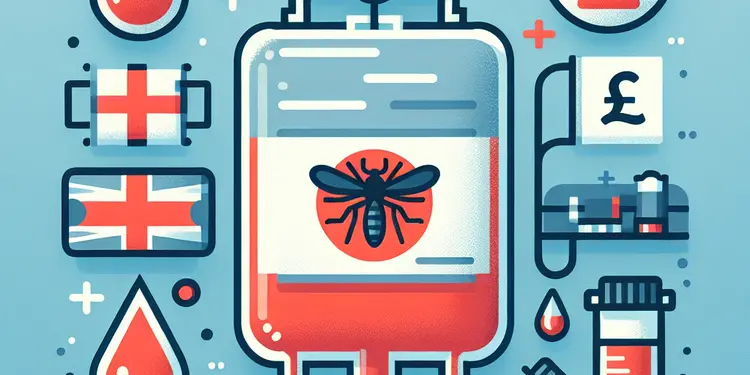
Can Dengue fever be transmitted through blood transfusions?
Relevance: 83%
-

Can certain medical conditions prevent receiving blood transfusions?
Relevance: 83%
-

Can you get any prion diseases from blood transfusion?
Relevance: 77%
-

What measures are taken to prevent disease transmission in blood transfusions?
Relevance: 75%
-

Is blood used for transfusions safe?
Relevance: 70%
-

What is plasma, and why might it be transfused?
Relevance: 69%
-

Can cytomegalovirus (CMV) be spread through transfusions?
Relevance: 67%
-

Are there global differences in screening for blood transfusions?
Relevance: 66%
-

What should a patient expect after a blood transfusion?
Relevance: 60%
-

How is blood screened to prevent disease transmission?
Relevance: 60%
-
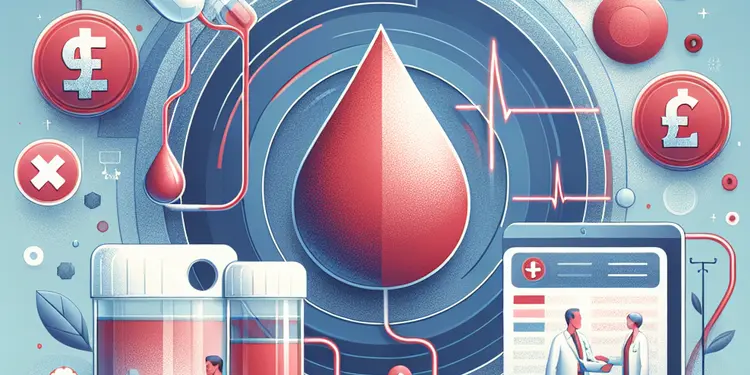
What kind of follow-up care is needed after a blood transfusion?
Relevance: 59%
-

What other viruses are tested for in blood donations?
Relevance: 54%
-

Are new emerging pathogens a risk for blood safety?
Relevance: 54%
-

How is a blood transfusion performed?
Relevance: 48%
-

Can you donate blood specifically for a friend or family member?
Relevance: 42%
Introduction to Blood Transfusion Needs
Blood transfusions are critical medical procedures used to replace lost components of the blood due to surgery, injury, or certain medical conditions. Understanding exactly how much blood is needed for a transfusion is essential for its effectiveness and safety. Several factors influence the decision regarding the volume of blood to transfuse, including the patient's medical condition, blood loss severity, and individual health factors.
Assessing the Need for Blood Transfusion
The initial step in determining the necessary amount of blood for transfusion is a thorough assessment of the patient's condition. Doctors measure the haemoglobin level, which is crucial for transporting oxygen in the blood. A low haemoglobin level, typically under 70 g/L, may necessitate a transfusion. Additionally, the patient's symptoms, such as fatigue, dizziness, or shortness of breath, play a role in this decision. It is not solely the laboratory values but also the clinical context that guides this determination.
Consideration of Blood Loss Volume
Another essential factor is the volume of blood loss. In an emergency, such as trauma or during surgery, estimating the blood lost helps guide transfusion needs. Doctors may use visual estimates, weighing blood-soaked materials, or employing mathematical formulas to approximate the lost blood volume. The estimated loss is then compared to the circulatory requirements to decide on the amount of blood needed to restore adequate circulation and oxygenation.
Individual Health Factors
Each patient’s health status, including age, weight, and medical history, influences the transfusion volume. For instance, patients with heart or kidney issues might need careful fluid balance, as excessive volume can strain these organs. Treatment protocols are adjusted to accommodate these specific health considerations, ensuring patient safety and optimizing transfusion benefits.
Guidelines and Protocols
Doctors adhere to established guidelines and protocols that provide recommendations on transfusion practices. The National Institute for Health and Care Excellence (NICE) in the UK offers guidelines that influence decisions on transfusion requirements. These guidelines consider updated research and expert consensus to define best practices in transfusion medicine.
Monitoring and Adjustments
During and after the transfusion, continuous monitoring is performed to observe the patient’s response. Monitoring includes vital signs, haemoglobin levels, and symptom improvement. Based on these observations, doctors may adjust the volume or rate of transfusion. This approach ensures the treatment remains appropriate to the patient’s evolving needs and minimizes the risk of transfusion-related complications.
Conclusion
Determining how much blood is needed for a transfusion involves a combination of clinical judgment, measurement of blood parameters, estimation of blood loss, and consideration of individual patient factors. By adhering to guidelines and closely monitoring patient responses, doctors can effectively manage transfusions to enhance patient outcomes.
Introduction to Blood Transfusion Needs
Blood transfusions are important medical treatments. They give patients new blood if they lose some due to surgery, injury, or health problems. It's very important to know how much blood to give. The right amount makes it safe and helpful. Doctors think about the patient's condition, how much blood they lost, and their overall health.
Assessing the Need for Blood Transfusion
First, doctors check how much blood the patient needs. They look at the haemoglobin level in the blood. Haemoglobin carries oxygen. If it's very low (usually below 70 g/L), a transfusion might be needed. Doctors also check if the patient feels very tired, dizzy, or has trouble breathing. Both test results and how the patient feels help doctors decide.
Consideration of Blood Loss Volume
How much blood the patient has lost is also important. In emergencies like accidents or during surgery, doctors try to guess how much blood is gone. They might look at blood-soaked bandages or use formulas to help them guess. This guess helps them know how much blood to give back to help the patient feel better.
Individual Health Factors
Every patient is different. Things like age, weight, and medical history affect how much blood they need. For example, if a patient has heart or kidney problems, they need special care. Doctors make sure not to give too much blood because it can be harmful for them. Doctors adjust treatment based on the patient’s specific needs.
Guidelines and Protocols
Doctors follow special rules and guidelines when giving blood. In the UK, the National Institute for Health and Care Excellence (NICE) provides these rules. The guidelines use the latest research to help doctors make the best choices.
Monitoring and Adjustments
Doctors watch the patient closely during and after the transfusion. They check things like blood pressure, haemoglobin levels, and if the patient feels better. If needed, doctors can change how much or how fast they give the blood. This ensures the patient gets the right care and avoids problems.
Conclusion
Deciding how much blood to give is a mix of different things: tests, how the patient feels, and health history. By following guidelines and watching patients carefully, doctors can give blood transfusions safely and effectively.
Frequently Asked Questions
How do doctors determine the amount of blood needed for a transfusion?
Doctors determine the amount of blood needed for a transfusion based on the patient's clinical condition, blood tests such as hemoglobin and hematocrit levels, and the specific reason for the transfusion.
What factors influence the decision of how much blood to transfuse?
Factors include the patient's age, weight, overall health, the severity of anemia or blood loss, and whether the patient has any underlying conditions.
Do doctors use specific guidelines to determine transfusion amounts?
Yes, doctors often follow clinical guidelines and protocols that outline transfusion thresholds and recommendations based on current medical research.
Can a patient's symptoms affect the amount of blood they receive?
Yes, if a patient shows symptoms of severe anemia or shock, more blood may be transfused to stabilize their condition.
Is the patient's blood volume considered when deciding how much blood to transfuse?
Yes, a patient's blood volume, which can be estimated based on their weight and age, is considered when determining transfusion volume.
How do hemoglobin levels impact the decision on blood transfusion amounts?
Low hemoglobin levels often indicate a need for transfusion. The amount is carefully calculated to safely raise hemoglobin to an acceptable level.
Are there risks associated with receiving too much blood during a transfusion?
Yes, over-transfusion can lead to complications such as fluid overload, heart failure, or transfusion-related acute lung injury.
How do medical emergencies influence transfusion quantity decisions?
In emergencies, doctors may prioritize rapid transfusion to stabilize the patient, initially administering a set amount and reassessing as needed.
Do different types of blood components affect how much is transfused?
Yes, different components like packed red blood cells, plasma, or platelets have different indications and are transfused in different amounts.
Can a patient's medical history play a role in deciding transfusion volume?
Absolutely, a history of conditions like heart failure or previous transfusion reactions can influence the safe volume of blood transfused.
Are laboratory tests always required before a blood transfusion?
Usually, yes, lab tests such as blood type and cross-match tests are essential to ensure compatibility and determine the transfusion needs.
How does patient weight influence blood transfusion amounts?
Patient weight helps estimate blood volume and dosing, ensuring appropriate and safe transfusion amounts.
Why might a doctor prescribe a specific number of blood units to transfuse?
Doctors prescribe specific units based on clinical protocols that calculate expected increases in hemoglobin or hematocrit per unit transfused.
How does the underlying cause of anemia affect transfusion decisions?
The cause of anemia, whether acute or chronic, affects how much blood is needed and how quickly it should be transfused.
Do pediatric patients have different transfusion needs than adults?
Yes, pediatric transfusions are often based on weight and specific pediatric guidelines to avoid over-transfusion.
In what cases might a full blood transfusion be considered unnecessary?
If a patient has mild anemia or can be treated with iron supplements, a full transfusion might be avoided in favor of less invasive treatments.
How frequently are hemoglobin and hematocrit levels monitored during transfusion?
These levels are monitored before, during, and after transfusion as needed to assess the patient's response.
What role do a patient's underlying conditions play in transfusion decisions?
Conditions such as cardiovascular disease or renal failure can affect how much blood can be safely transfused.
How are blood transfusion amounts adjusted for patients with bleeding disorders?
For patients with bleeding disorders, transfusions may be tailored to include specific clotting factors in addition to red blood cells.
Can a patient's response to previous transfusions affect future transfusion plans?
Yes, past reactions or complications can guide the amount and type of blood components used in future transfusions.
How do doctors decide how much blood is needed for a transfusion?
Doctors find out how much blood a person needs by doing some tests. - **Look at blood tests**: Doctors take a small amount of your blood to see how much you need. - **Check your health**: They ask about how you're feeling and check your body for signs you need more blood. - **Use special tools**: Doctors have special tools that help them know how much blood to give. If you're interested, you can use helpful tools like picture cards or videos to learn more about this. Asking a doctor or nurse questions can also be a great way to understand better.Doctors figure out how much blood is needed for a transfusion by looking at the patient's health, blood tests, and the reason they need the blood.
What things decide how much blood to give someone?
Here are some things that help doctors decide how much blood to give:
- How much blood the person has lost.
- If the person is feeling very weak or dizzy.
- The person's health and if they have other illnesses.
- If the person needs surgery or if they are bleeding inside.
- What the person's blood tests show.
When reading, using tools like text-to-speech can help. You can also ask someone to explain words that are hard to understand.
Things that matter are how old the person is, their weight, how healthy they are, how bad the anemia or bleeding is, and if they have other health problems.
Tools like audiobooks or text-to-speech apps can help people understand better. You can also use pictures and diagrams to make things clearer.
Do doctors have rules for how much blood to give?
Yes, doctors usually follow special rules to know when to give a blood transfusion. These rules help them decide based on the latest medical studies.
Do a patient's symptoms change how much blood they need?
Do you want to learn about blood and health? This is for you!
Here is an easy way to understand:
- Symptoms are signs of feeling unwell, like a headache or tummy ache.
- These symptoms might make a doctor decide how much blood to give a patient.
Remember:
- Doctors use symptoms to help decide care.
- They always want to help people feel better.
Tip: If you have questions, you can ask a doctor or nurse to explain.
Yes, if a person is very sick with anemia or shock, they might need more blood to help them get better.
Do doctors think about how much blood is in the body when giving a blood transfusion?
Doctors want to make sure you get the right amount of blood if you need a blood transfusion. They check how much blood you already have in your body before giving you more. This helps keep you safe and healthy.
Yes, doctors use a patient's weight and age to guess how much blood they have. This helps them decide how much blood to give if the patient needs a transfusion.
How do hemoglobin levels affect how much blood to give in a transfusion?
Low hemoglobin levels mean you might need more blood. Doctors carefully give just the right amount to make you feel better and safe.
Can getting too much blood in a transfusion be bad for you?
Yes, getting too much blood can cause problems. It can lead to too much fluid in the body, make the heart stop working well, or cause breathing trouble.
How do emergencies affect the amount of blood given?
In an emergency, doctors give blood quickly to help the patient. They start with a specific amount and then check to see if the patient needs more.
Do different parts of blood change how much is given in a transfusion?
When doctors give blood, they sometimes use different parts of it. Some parts of blood are red cells, plasma, and platelets.
This question is asking if using different parts of blood changes how much is given to a person.
If you find this hard to read, you can:
- Ask someone to read it with you.
- Use a reading app to help you understand.
- Break down the text and talk about it in small parts.
Yes, different parts of the blood like red blood cells, plasma, and platelets are used for different reasons and in different amounts.
Does a patient's past health affect how much blood they get?
Yes, if someone has had heart problems or a bad reaction to blood transfusions before, doctors will be careful about how much blood they give them.
Do we always need lab tests before giving blood?
Yes, doctors often do lab tests like checking blood type and matching it. These tests make sure the blood works well with your body for a transfusion.
How does a person's weight change how much blood they need?
Knowing how much a patient weighs helps to figure out how much blood they need. It makes sure they get the right amount of blood safely.
Why does a doctor choose a certain amount of blood for a transfusion?
Sometimes people need more blood. This is called a blood transfusion. A doctor decides how much blood to give. They do this to help the person feel better and get healthy.
Doctors check what the person needs. They make sure they get the right amount. They do not want to give too much or too little.
If you find reading difficult, try asking someone to read it with you. You can also use an audiobook or read out loud.
Doctors give medicine using rules that help them know how much to give. They check how much hemoglobin and hematocrit will go up with each unit given.
You can use big print or pictures to help you understand better. Asking someone to read with you can also help.
How does the reason for anemia change blood transfusion choices?
Anemia happens when your body doesn't have enough red blood cells. This can make you feel very tired and weak.
The reason why someone has anemia can change how doctors decide on treatment.
Different Causes:
- Some people have anemia because they don't get enough nutrients like iron or vitamins.
- Others have it because their body is not making red blood cells properly.
Transfusion Decisions:
- If anemia is from low iron, doctors might give iron supplements first.
- If anemia is very severe or not improving, a blood transfusion may be needed.
Doctors make these decisions based on tests and how the patient feels.
Helpful Tip: Use pictures, simple charts, or ask someone to explain if this topic is hard to understand. Talking with a nurse or doctor can also help make it clearer.
The reason why someone has anemia decides how much blood they need and how fast they should get it.
Do children need different blood transfusions than grown-ups?
Yes, when children need blood transfusions, doctors use the child's weight to decide how much blood to give. They also follow special rules for children to make sure they don't get too much blood.
When might you not need a full blood transfusion?
A full blood transfusion gives you new blood. Sometimes, you might not need it. Here are times when you might not need a full blood transfusion:
- If you have lost just a little bit of blood.
- If you can get better with just some medicine or rest.
- If doctors use other treatments that work better for you.
Talking to your doctor can help you know if you really need a full blood transfusion.
If someone has a little bit of anemia, or if they can get better by taking iron pills, they might not need to get a full blood transfusion. They can try other ways that are easier instead.
How often do doctors check blood levels during a transfusion?
Doctors check these levels before, during, and after giving blood to see how the patient is doing.
How do a patient's health problems affect blood transfusion choices?
Doctors look at a person's health issues before giving a blood transfusion. This helps them make the best choice for the patient.
If you find reading hard, you can:
- Ask someone to read with you.
- Use a reading app to read out loud.
- Take your time and read slowly.
Heart problems or kidney problems can change how much blood you can get safely.
How do doctors decide how much blood to give to people who bleed a lot?
Doctors think about how much blood each person needs. People who bleed a lot sometimes need extra blood. Doctors give them the right amount so they feel better.
Helpful tools for understanding:
- Pictures and diagrams can show how blood is given.
- Talking to a nurse or doctor can help if you have questions.
If someone has problems with bleeding, doctors can give them a special kind of blood. This blood has extra stuff in it to help stop bleeding.
Can past blood transfusions change future plans?
If you had a blood transfusion before, doctors will look to see how it went. This helps them plan if you need blood again.
If you had any problems like feeling sick or itchy, tell the doctor. They will make a note to keep you safe next time.
Ask a doctor or nurse if you have questions. You can also bring a friend or family member to help understand.
Yes, if someone had a problem with a blood transfusion in the past, doctors use that information to decide how much and what kind of blood to give next time.
Useful Links
- Ergsy carfully checks the information in the videos we provide here.
- Videos shown by Youtube after a video has completed, have NOT been reviewed by ERGSY.
- To view, click the arrow in centre of video.
- Most of the videos you find here will have subtitles and/or closed captions available.
- You may need to turn these on, and choose your preferred language.
- Go to the video you'd like to watch.
- If closed captions (CC) are available, settings will be visible on the bottom right of the video player.
- To turn on Captions, click settings .
- To turn off Captions, click settings again.
More Items From Ergsy search
-

What is a blood transfusion?
Relevance: 100%
-

Blood Product Transfusions
Relevance: 100%
-

Blood Transfusion
Relevance: 97%
-

Are there risks associated with blood transfusions?
Relevance: 95%
-

Is there an age limit for receiving blood transfusions?
Relevance: 92%
-

Is HTLV a risk in blood transfusions?
Relevance: 92%
-

Is Hepatitis B a risk in blood transfusions?
Relevance: 91%
-

Why might someone need a blood transfusion?
Relevance: 89%
-

How long does a blood transfusion take?
Relevance: 88%
-

What diseases can be spread by blood transfusions?
Relevance: 88%
-

What types of blood products can be transfused?
Relevance: 88%
-

How do healthcare providers match blood for transfusions?
Relevance: 87%
-

Is Chagas disease a concern with blood transfusions?
Relevance: 87%
-

Can HIV be transmitted through blood transfusions?
Relevance: 87%
-

What are some common reasons blood transfusions are needed?
Relevance: 86%
-

Can someone have a reaction to a mismatched blood transfusion?
Relevance: 86%
-

Can syphilis be transmitted via blood transfusion?
Relevance: 86%
-

Is Zika virus screened for in blood transfusions?
Relevance: 85%
-

Can bacterial infections be transmitted through blood transfusion?
Relevance: 84%
-

Can people of any blood type receive a transfusion of any blood type?
Relevance: 84%
-

What is the most common disease transmitted by blood transfusion?
Relevance: 84%
-

Are there any parasites that can be transmitted through blood transfusions?
Relevance: 84%
-

Is malaria still a concern for blood transfusion safety?
Relevance: 84%
-

Can COVID-19 be transmitted through blood transfusions?
Relevance: 84%
-

How do doctors determine how much blood is needed for a transfusion?
Relevance: 83%
-

Can Dengue fever be transmitted through blood transfusions?
Relevance: 83%
-

Can certain medical conditions prevent receiving blood transfusions?
Relevance: 83%
-

Can you get any prion diseases from blood transfusion?
Relevance: 77%
-

What measures are taken to prevent disease transmission in blood transfusions?
Relevance: 75%
-

Is blood used for transfusions safe?
Relevance: 70%
-

What is plasma, and why might it be transfused?
Relevance: 69%
-

Can cytomegalovirus (CMV) be spread through transfusions?
Relevance: 67%
-

Are there global differences in screening for blood transfusions?
Relevance: 66%
-

What should a patient expect after a blood transfusion?
Relevance: 60%
-

How is blood screened to prevent disease transmission?
Relevance: 60%
-

What kind of follow-up care is needed after a blood transfusion?
Relevance: 59%
-

What other viruses are tested for in blood donations?
Relevance: 54%
-

Are new emerging pathogens a risk for blood safety?
Relevance: 54%
-

How is a blood transfusion performed?
Relevance: 48%
-

Can you donate blood specifically for a friend or family member?
Relevance: 42%


